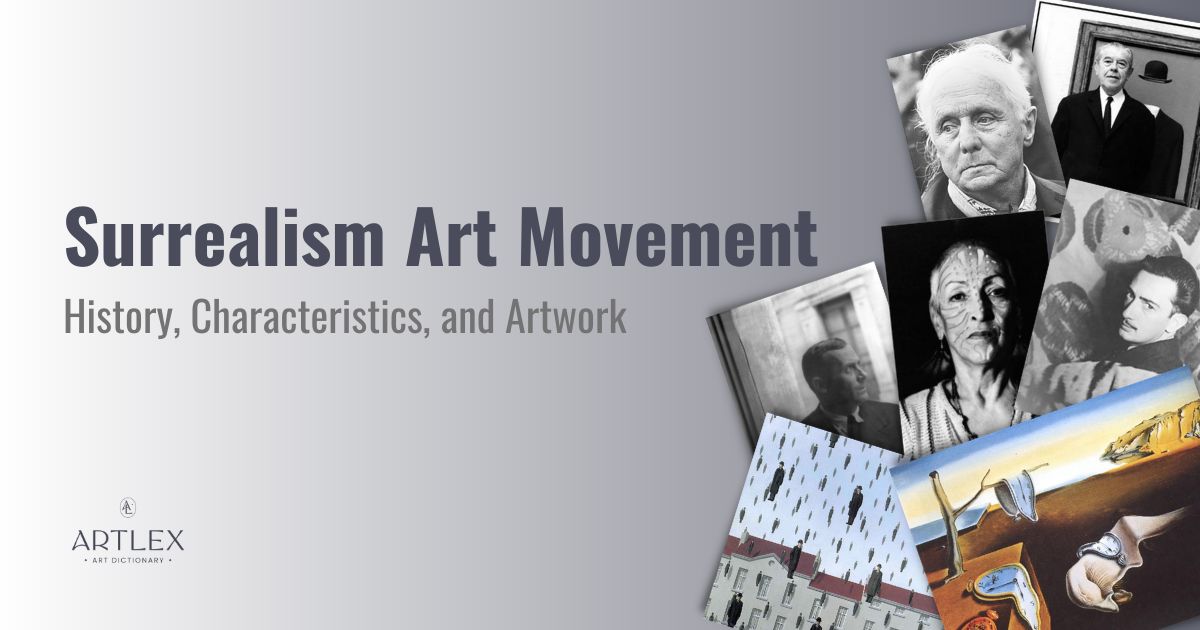
Surrealism was an art and literary movement that utilized fantasy, myth, and dream imagery when creating art. The Surrealist movement began in Europe in the 1920’s as a reaction to the atrocities and of World War I and the cultural-political values of the time period.
Characteristics of Surrealist artwork include: Using the element of fantasy, a metaphysical atmosphere, and dreamlike imagery depicting mysterious environments and landscapes, and more. Surrealist techniques include: Collage, doodling, frottage, and more.
Significant visual artists of the Surrealist movement include André Breton, Salvador Dali, and René Magritte. Significant Surrealist Artwork include: “The Persistance of Memory” by Salvador Dalí, “Battle of the Fishes” by Andre Masson, and “Le Dejeuner en Fourrure” by Meret Oppenheim.
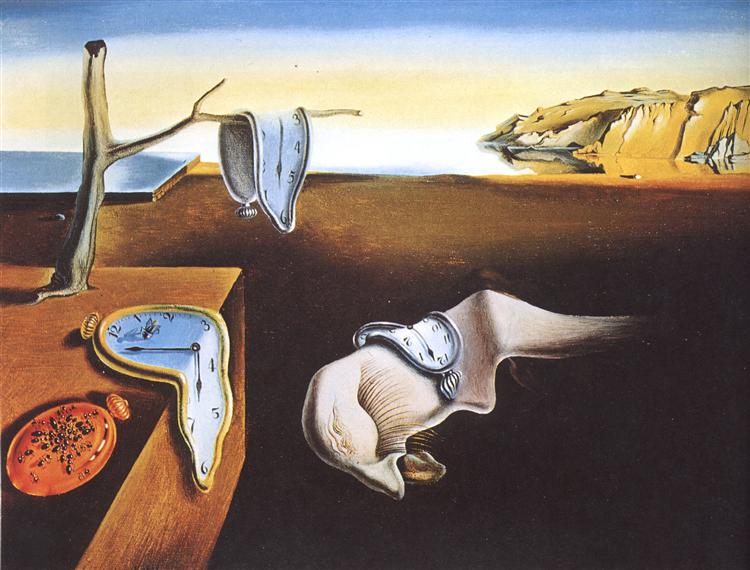
The Persistence of Memory, Salvador Dali, 1931, oil on canvas, Museum of Modern Art New York.
What is Surrealism?
Surrealism was an artistic movement and literary movement that utilized fantasy, myth, and dream imagery within artwork. Surrealism emerged in Europe in the 1920s as a reaction to the atrocities of World War I and the cultural-political values of the time. Surrealism was defined by an attitude of experimentation and openness to possibilities and unexpected outcomes, it rebelled against the limitations of the rational mind, and, therefore, repressive social norms. Surrealism was inextricably linked to Sigmund Freud’s psychoanalytic theories that served as the foundation for the movement’s complete rejection of rationalism and conformism.
Origins of the term “Surrealism”
The term “Surrealism” originated with the French write, Guillaume Apollinaire, who coined the word “surrealism” in 1917. The term “Surrealism” is derived from the French words “sur” (on, above) and réalisme (realism, reality). The literal translation is “above or beyond reality”. The Surrealists aimed to tap into the unconscious and to mix the logical with the irrational, dream, and reality to create a new hyper-reality.
Surrealist artists employed fantasy, myth, and dream imagery to create work; they experimented with an array of media and innovative processes in unconventional and symbolic ways in order to explore the inner workings of their minds. The Surrealist contributions played a significant role in art history by influencing numerous subsequent art movements, and their work is still relevant today.
Surrealism Art Movement History
Surrealism originally emerged as a literary movement in Paris in 1924 and was an offshoot of the Dada movement. A former member of the Dada group, the writer and poet André Breton, disappointed with the lack of direction of Dada, began looking to experiment with new and innovative practices. Greatly influenced by the ideas of Sigmund Freud (the father of psychoanalysis), Breton utilized Freud’s theories to establish the philosophy of Surrealism, which focused on intuitive and automatic processes.
Andre Breton founded and led Surrealist movement which attracted a number of young French writers and artists eager to explore the creative potential of the unconscious mind. Breton and surrealist artists used a variety of mediums and pioneered the use of chance association between text and image.
Breton wrote “The Surrealist Manifesto” and defined Surrealism as: “Pure psychic automatism in its pure state, by which one proposes to express – verbally, by means of the written word, or in any other manner – the actual functioning of thought. Thought’s dictation, in the absence of all control exercised by reason and outside all aesthetic and moral preoccupations.”
The most notable International Surrealist exhibition was hold at the Beaux Arts Gallery in Paris, in 1938. Surrealism had a significant impact on a variety of disciplines besides literature and the visual arts, such as music, film, and theater, philosophy, social and political theory. Although centered in France, Surrealism spread throughout the world, drawing many artists into its circle, especially in the 1930s and 40s, a period underlined by great concerns for a society on the verge of collapse. With the crisis of the rising political unrest and a second world war, many Surrealists moved to the Americas, thus further spreading their views.
Breton grew more and more engaged with revolutionary political activism for the movement’s main objective, which led to the dispersal of the surrealist group members into smaller artistic groups. The end of WW II marked the beginning of the end of surrealism, which ceased to exist as a movement around 1960.
The Surrealists’ interest in automatic processes and focus on the subconscious and unconscious mind, influenced artists who led the way for the Abstract Expressionism movement in the 1940s.
Surrealism Art Characteristics
Visual characteristics of surrealism are the following:
- The element of fantasy
- Metaphysical atmosphere
- Dreamlike and uncanny imagery depicting mysterious environments and landscapes
- Representation with almost photographic precision. Hyper-realistic rendering of form and volume
- A distortion of reality with contradictory elements and random associations
- Eccentric, shocking, and mysterious
- Eerie creatures and fantastical forms from everyday objects
- The use of the visual form to express and translate the unconscious
- Experimental techniques and forms such as collage, frottage, doodling, decalcomania, and grattage.
Surrealists experimented with various mediums, such as writing, painting, experimental techniques, objects and sculptures, photography, and film. Nevertheless, the imagery in surrealist paintings is possibly the most distinct element of the movement. Surrealist works possess an element of surprise with unexpected, uncanny juxtapositions, and absurd themes. Surrealists were interested in the interpretation of dreams and viewed them as expressions of suppressed emotions and desires. Each artist utilized recurring themes and motifs from the dreams and unconscious mind.
“To be a surrealist means barring from your mind all remembrance of what you have seen, and being always on the lookout for what has never been”, Rene Magritte
One of the central surrealist principles is the use of displacement. With the removal and displacement of an element from its original and familiar context, Surrealists played with shocking juxtapositions to trigger new psychological associations for the viewer.
Surrealism Techniques
Surrealist artists employed and invented a variety of techniques and games, including: Automatism, Collage, doodling, frottage, decalcomania, and grattage. The purposes of these techniques was to explore a free-flowing creative process absent from conscious decision-making and the rational mind. They have produced an array of work and explored various methods and mediums. Collage, doodling, frottage, decalcomania, and grattage are just a few of the techniques that artists like Max Ernst and Joan Miró devised and employed to produce unexpected and even bizarre artwork. Artists such as Hans Arp used the technique of collage, while Meret Elisabeth Oppenheim created assemblages of commonplace objects.
One of the most popular techniques used by many Surrealist artists to tap into the unconscious mind was automatism. The term “automatism” in psychology describes involuntary behaviors and processes that happen without a person’s conscious effort, such as breathing, reflexes, motor and procedural skills, hidden biases, and so on. The Surrealists took inspiration for this from both the “spirit writing” of mediums and the psychoanalytic techniques employed by Freud and others to reveal patients’ unconscious thoughts through monologues.
The Surrealists developed techniques in “automatic” writing, speaking, painting, free association of images and text, and interactive group games such as the Exquisite Corpse, which they believed would assist them in unveiling hidden aspects of the human psyche and create more potent and genuine work.
See our full guide on Surrealism Techniques.
Surrealist Artworks
Examples of famous Surrealist Art artwork include the following:
Salvador Dali, THE PERSISTENCE OF MEMORY, 1931
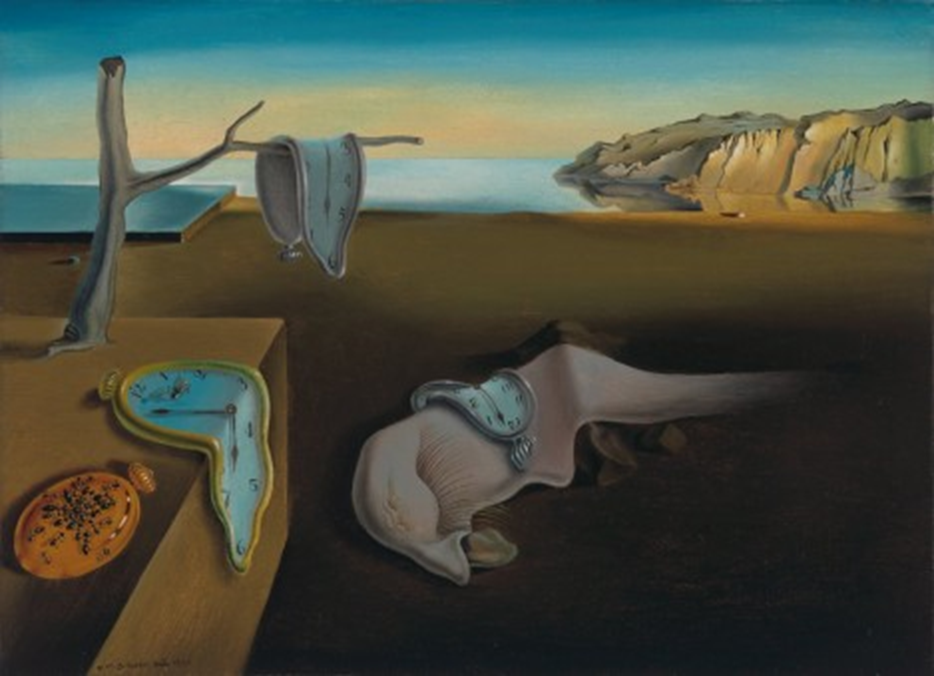
Salvador Dali invented the Paranoiac Critical Method, through which he induced a mental state of hallucinations without the use of chemicals, that allowed him to escape reality and experience visions which he would then translate into art.
In his work “The Persistence of Memory”, Dali created a bizarre imagery of a hallucinatory world and mysterious place. The painting presents a desert landscape with a sea in the background, a disfigured sleeping face lying down, a piece of building to the left with a dry tree, and melting watches all around. All elements of the composition are painted with great detail and great technical skill, with the use of perspective and depth.
The most characteristic element is the melting clocks, which can be interpreted as a symbol of the concept of the passing of time lost in dreams or the subconscious. The ants walking on the clocks represent the decay and wear of time. There is no movement at all; everything has stopped. But the title “the persistence of memory” can also refer to the fact that time has stopped in old memories.
BATTLE OF THE FISHES, Andre Masson, 1927
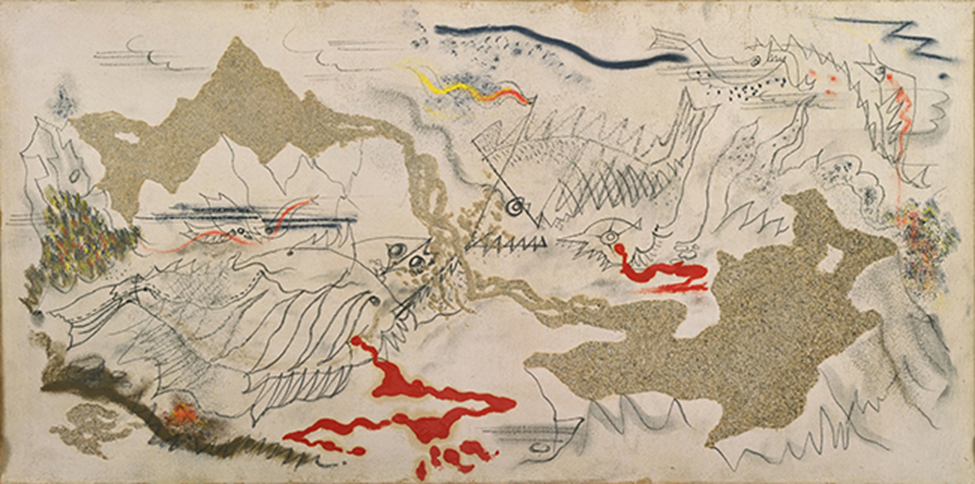
This mixed media piece, “Battle of Fishes” was created by Andre Masson in the automatic painting technique, as indicated by the free-flowing and aggressive gestural line work. The image that emerged from this automatic process presents a ferocious underwater battle among sharp-toothed fish. It communicates a sense of confusion, but also a rhythmic movement and balance between the different elements: the gregarious lines, sand areas, and intense red blood spills.
This work is a representation of the brutality of life and the severe anxieties that Masson suffered through the physical and psychological traumas he received from World War I. After the war, Masson was institutionalized and suffered from insomnia and recurrent nightmares, which served as the inspiration for his surrealist artwork. For Masson, Surrealism was the ideal tool to find relief and express his unconscious thoughts and feelings.
GOLCONDA, René Magritte, 1953
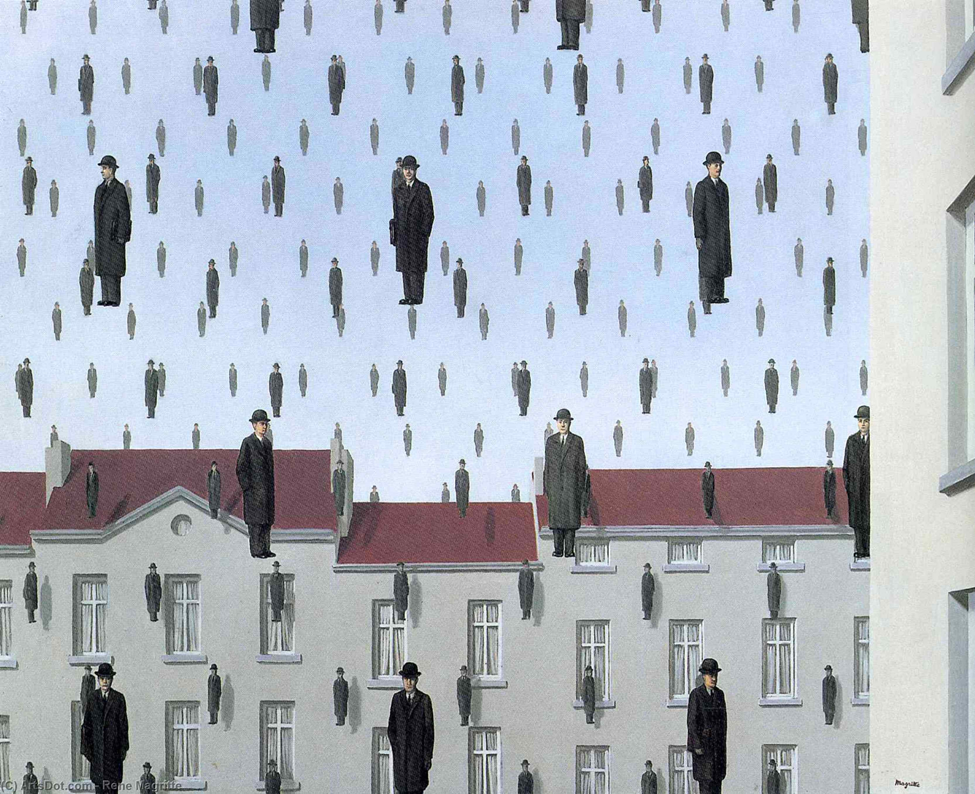
In his work “Golconda”, the Belgian artist René Magritte presents hundreds of male figures in coats and hats that initially appear to fall like raindrops from a clear sky in a suburban scene filled with traditional Belgian houses. All the figures are identical, but they differ in their orientation and the distance between them, while transmit a static state as if they are floating in mid-air. The composition is asymmetrical, and there is no central point. There is a repeating pattern that creates a rhythm and movement back and forth. Magritte himself lived in a similar suburban environment and dressed in a similar fashion.
Magritte uses realistic images in a fantastic and enigmatic manner to challenge people’s perceptions. Attempting to understand the image’s deeper meaning will be ineffective, as mystery is what underlies the work; Magritte himself stated: “My paintings are visible images which conceal nothing; they evoke mystery and, indeed, when one sees one of my pictures, one asks oneself this simple question, ‘What does that mean?’. It does not mean anything, because mystery means nothing either, it is unknowable.”
A larger list of Surrealist art is shown below:
- Egg in the Church or the Snake (1932) by André Breton
- Carnival of Harlequin (1924-25) by Joan Miró
- The Son of Man (1964) by Rene Magritte
- The Treachery of Images (1929) by Rene Magritte
- The Barbarians (1937) by Max Ernst
- Eine Kleine Nachtmusik (1943) by Dorothea Tanning
- Automatic Drawing (1934) by Andre Masson
- Suspended Ball (1930–31) by Alberto Giacometti
- The Temptation of St. Anthony (1946) by Salvador Dalí
- Lobster Telephone (1938) by Salvador Dalí
- Harlequin’s carnival (1924) by Joan Miró
- The Tilled Field (1923–1924) by Joan Miró
- Mama, Papa is Wounded! (1927) by Yves Tanguy
- Ulu’s Pants (1952) by Leonora Carrington
- I Saw Three Cities (1944) by Kay Sage
- Celestial Pablum Remedios Varo Uranga
- I and the Village (1911) by Marc Chagall
- Celestial Pablum (1958) by Remedios Varo
Surrealist Artists
Some of the most notable Surrealist artists are: André Breton, Salvador Dali, René Magritte, Jean Arb, Andre Masson, James Ensor, Juan Miró, Max Ernst, Meret Oppenheim.
Salvador Dali (1904 – 1989)
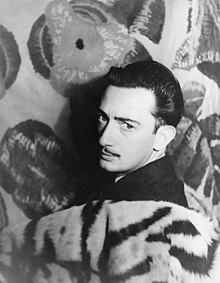
A Spanish artist, one of the most important and recognizable Surrealist artist. A very eccentric figure of surrealist art. While the other surrealists relied more on dreams and the technique of automatism to draw and unravel their fantasies from the subconscious, Salvador Dalí presents himself as truly paranoid. He worked with all mediums, leaving behind a rich body of work, consisting of oil paintings, drawings, watercolors, graphics, jewelry, and objects of all kinds.
René Magritte (1898-1967)
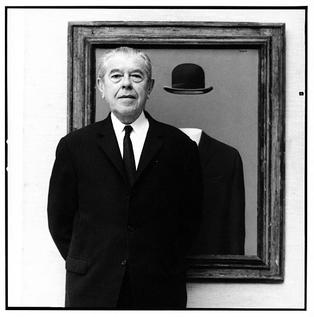
Rene Magritte was born November 21, 1898 in Lessines, Belgium. Magritte was a Belgian surrealist painter with Dada influences. In his work, he often gives new interpretations to familiar objects. Magritte’s art shows a more representative style of surrealism. In addition to the fictional elements, his works are often witty and entertaining. He absurdly mixes images and ideas that are completely contradictory, opposite, and different. His intention was to shake up the viewer’s conventional expectations. Through his fantastic compositions a style called “magical realism”.
Rene Magritte died August 15, 1967 in Schaerbeek, Belgium.
Meret Elisabeth Oppenheim (1913 – 1985)
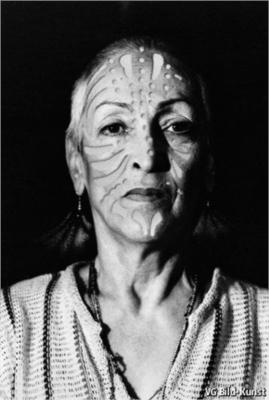
Meret Elisabeth Oppenheim was born October 6, 1913, in Berlin, Germany. She was German born, but is identified as a Swiss artist. She moved to Paris in 1932 to study fine arts, where she met the Swiss artist Alberto Giacometti and the French artist Jean Arp, and soon joined the group of surrealists. Oppenheim made objects that surprised and delighted the public. She worked with various mediums such as painting, objects and assemblages, mixed media, and photography. She studied at the Basel School of Fine Arts and participated in group exhibitions of surrealist artists. Her rapid recognition and success, however, led her to melancholy and anxiety, resulting in a decline in her work, which lasted for twenty years. She returned to the artistic scene in 1954.
Oppenheim is considered the most important representative of surrealism in Switzerland. She is most well known for her iconic and strange assemblages that removed commonplace items out of their familiar context. Meret Elisabeth Oppenheim died November 15, 1985 in Basel, Switzerland.
Joan Miró (1893-1983)
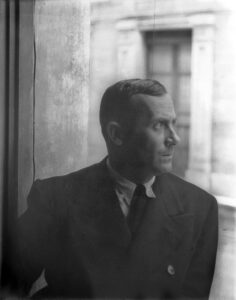
Joan Miro was a Spanish Catalan painter and sculptor. Born on April 20, 1893, in Barcelona, Spain, Miro became known as one of the greatest and most beloved artists of the 20th century. He is considered a “poet” of the image. Few people can resist the charm of cheerful, spirited, imaginative, and, at times, menacing figures and symbols. He employed automatic techniques and blended surrealist fantasy with abstract painting. He is often classified among the Surrealists, although HE preferred to keep a distance from them and refused to sign their manifestos. Today, he is recognized as a significant forerunner of American Abstract Expressionism.
Joan Miro died on December 25, 1983, in Palma, Spain.
Max Ernst (1891-1976)
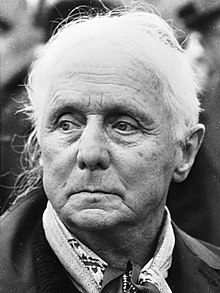
Max Ernst was a German painter and sculptor who is considered a bridge between Dadaism and Surrealism. He was a self-taught artist with no official training in the arts, but greatly inspired a generation of American artists while residing in the US after he fled Europe during World War II. He was noted for the combination of different techniques he used to render details and penetrate the mysterious world of nature. He invented the notable Frottage and Grattage technique and the dripping technique adopted later by Jackson Pollock; he also worked with collage and assemblage.
Max Ernst was born on April 2, 1891 in Brühl, Germany, and died on April 1, 1976 in Paris, France.
A full list of Surrealist artists can be found below:
- André Breton
- Hans Arp
- Max Ernst
- Salvador Dalí
- Alberto Giacometti
- Joan Miró
- René Magritte
- Man Ray
- Yves Tanguy
- Leonora Carrington
- Pablo Picasso
- Meret Oppenheim
- Hans Richter
- Hans Bellmer
- Luis Bunuel
- Claude Cahun
- Remedios Varo
- André Masson
- Gala Dalí
- Paul Eluard
- Louis Aragon
- Charles Baudelaire
Who Influenced Surrealism?
The Surrealists used Freud’s theory of dreams as the theoretical foundation for their work, specifically his book, The Interpretation of Dreams (1899). Freud emphasized that dreams and the unconscious are a window into the complex and suppressed inner worlds of our deepest motivations, innermost fears, and thoughts on sexuality, desire, and violence. Surrealists sought to give these psychoanalytic theories a poetic and artistic expression, by applying practices such as hypnosis, automatic writing, experimental walking, and dream recording, just to name a few. Before them, Dadaists had also experimented with methods such as hypnosis to gain access to the subconscious.
Artistic influences to the Surrealism movement, however, came from many different sources. The most direct influence for many Surrealists was the work of Giorgio de Chirico, who like them, also used fantastic imagery with illogical and bizarre juxtapositions in his Metaphysical paintings. De Chirico was not a surrealist, although his impact on the movement was so great that he is often mistaken for one. The founder of the movement, André Breton, had even chosen De Chirico’s work “The Dream of Tobias” to serve as the movement’s emblem.
Surrealists were also drawn to the work of artists who were engaged in primitivism, naïve, or fantastical imagery, and took inspiration even from Renaissance artists such as Giuseppe Arcimboldo and Hieronymus Bosch.
Who Did Surrealism Influence?
The exhibition Fantastic Art, Dada, Surrealism,1936, at the Museum of Modern Art in New York, left a profound impression on many American artists, such as Jackson Pollock, who began to experiment with automatism. His experiments would later lead to his drip paintings.
Due to the political upheaval in Europe during World War II, New York emerged as the hub of a new vanguard that favored abstraction as a means of accessing the unconscious, contrary to the European Surrealists more realistic approach. The speed with which this revolutionary movement and Surrealist ideas disseminated throughout the New York art scene is demonstrated by Peggy Guggenheim’s 1942 exhibition in the Art of this Century gallery, of Surrealist-influenced artists, such as Rothko, Gottlieb, Motherwell, Hoffman, Still, and Pollock, among European painters Miró, Klee, and Masson.
Finally, Surrealism has left such a deep impact to the arts that is still expanding globally today. Many contemporary artists are still fascinated by the Surrealism principles to this day, and create work to explore their inner worlds and express their creativity.
